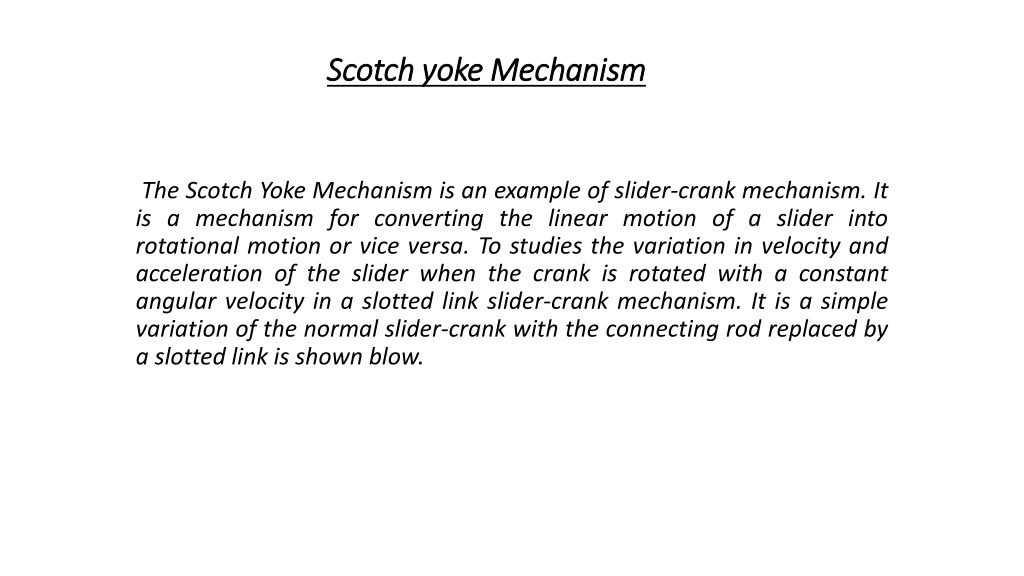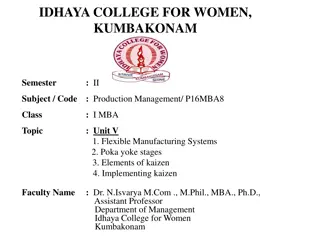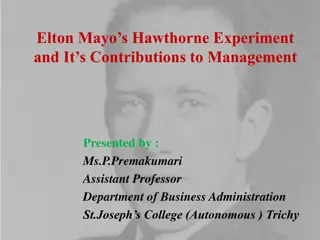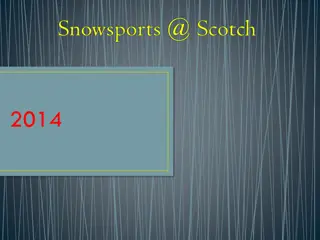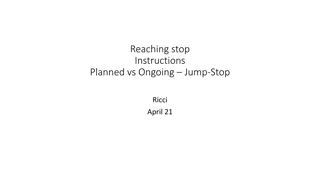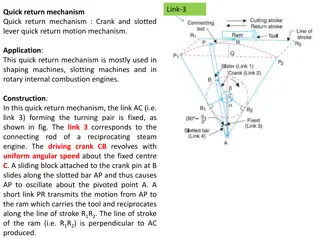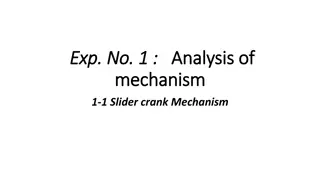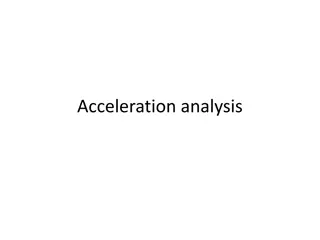Understanding The Scotch Yoke Mechanism: Experiment and Analysis
The Scotch Yoke Mechanism is a slider-crank mechanism that converts linear motion into rotational motion or vice versa. This experiment involves studying the velocity, acceleration, and displacement of a slider as the crank is rotated with constant angular velocity in a slotted link slider-crank mechanism. Detailed procedures for data collection, analysis, and graph plotting are provided for a comprehensive understanding of this mechanism.
Download Presentation

Please find below an Image/Link to download the presentation.
The content on the website is provided AS IS for your information and personal use only. It may not be sold, licensed, or shared on other websites without obtaining consent from the author. Download presentation by click this link. If you encounter any issues during the download, it is possible that the publisher has removed the file from their server.
E N D
Presentation Transcript
Scotch yoke Mechanism Scotch yoke Mechanism The Scotch Yoke Mechanism is an example of slider-crank mechanism. It is a mechanism for converting the linear motion of a slider into rotational motion or vice versa. To studies the variation in velocity and acceleration of the slider when the crank is rotated with a constant angular velocity in a slotted link slider-crank mechanism. It is a simple variation of the normal slider-crank with the connecting rod replaced by a slotted link is shown blow.
Procedures Set the crank angle at zero degrees, with the help of the angular scale available on the crank, and record the piston displacement. Move the crank angle by 30 and record the displacement. Repeat steps 1&2 for one complete revolution of the crank angle. Tabulate your results in the table given.
??= ? ????? Let r =OA=25mm ??= ?? ???? ??= ??2????
Graph: Plot a graph of the experimental piston rod displacement versus crank angle. Plot on a same graph of the theoretical piston rod displacement versus crank angle. Plot a graph of the theoretical piston rod velocity and acceleration versus crank angle.
